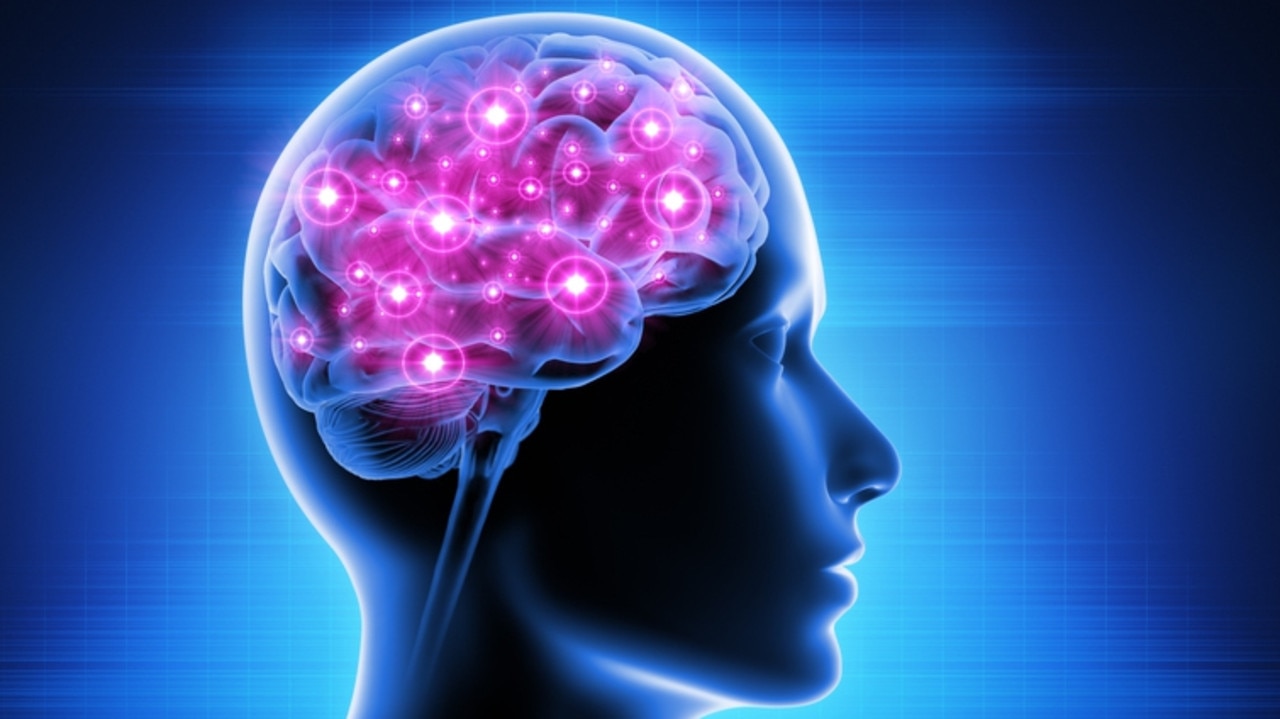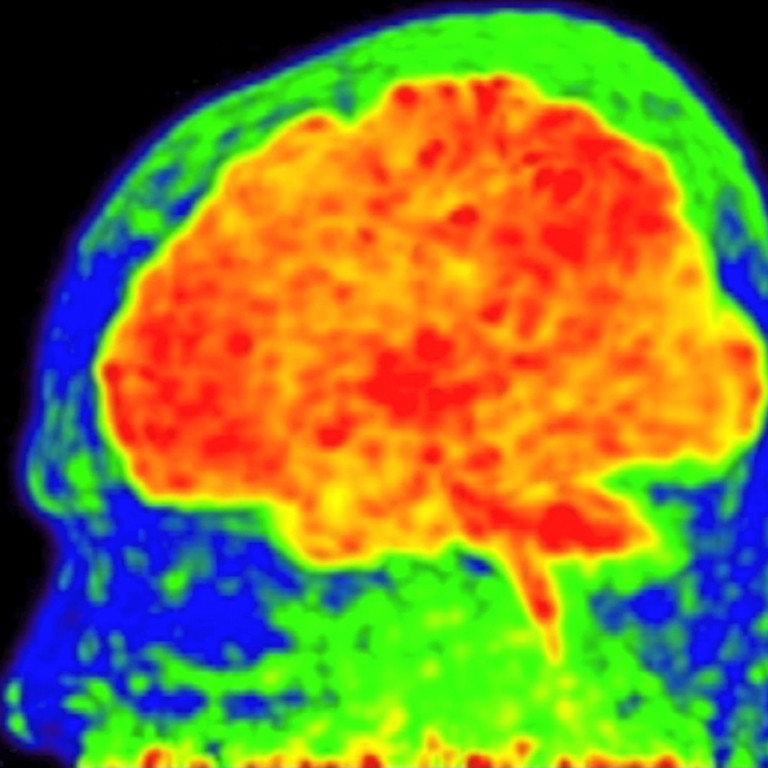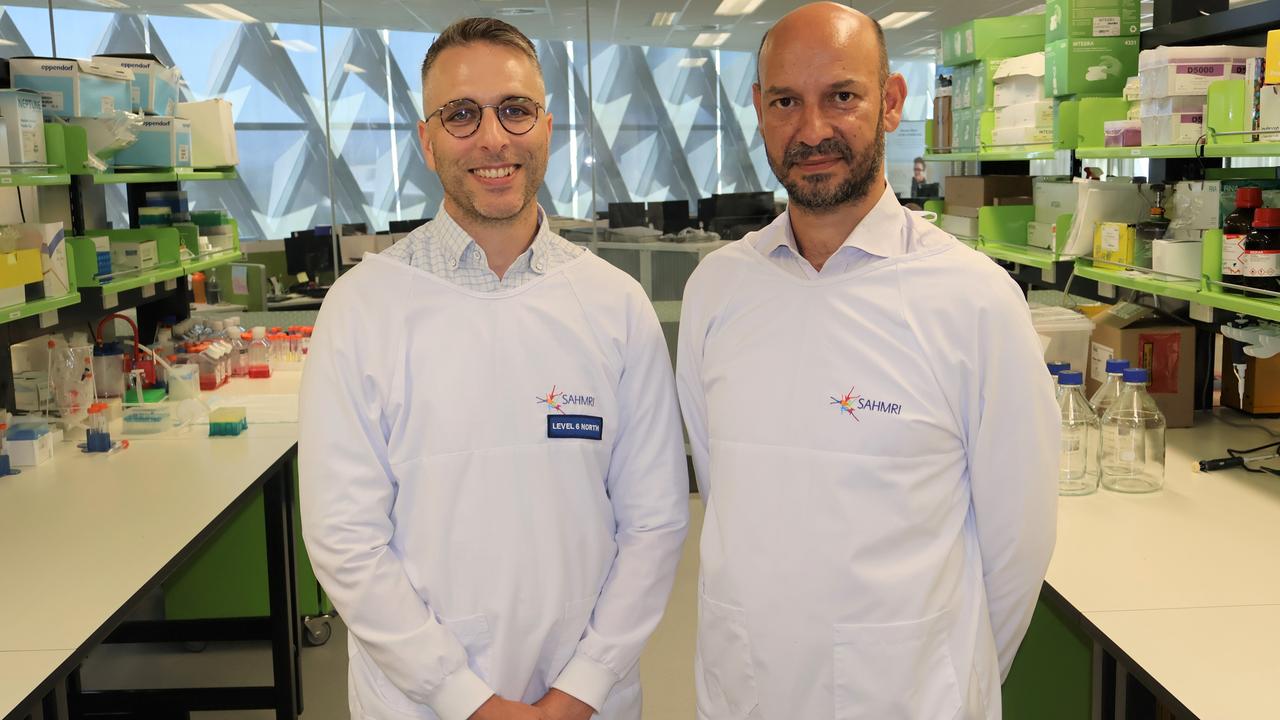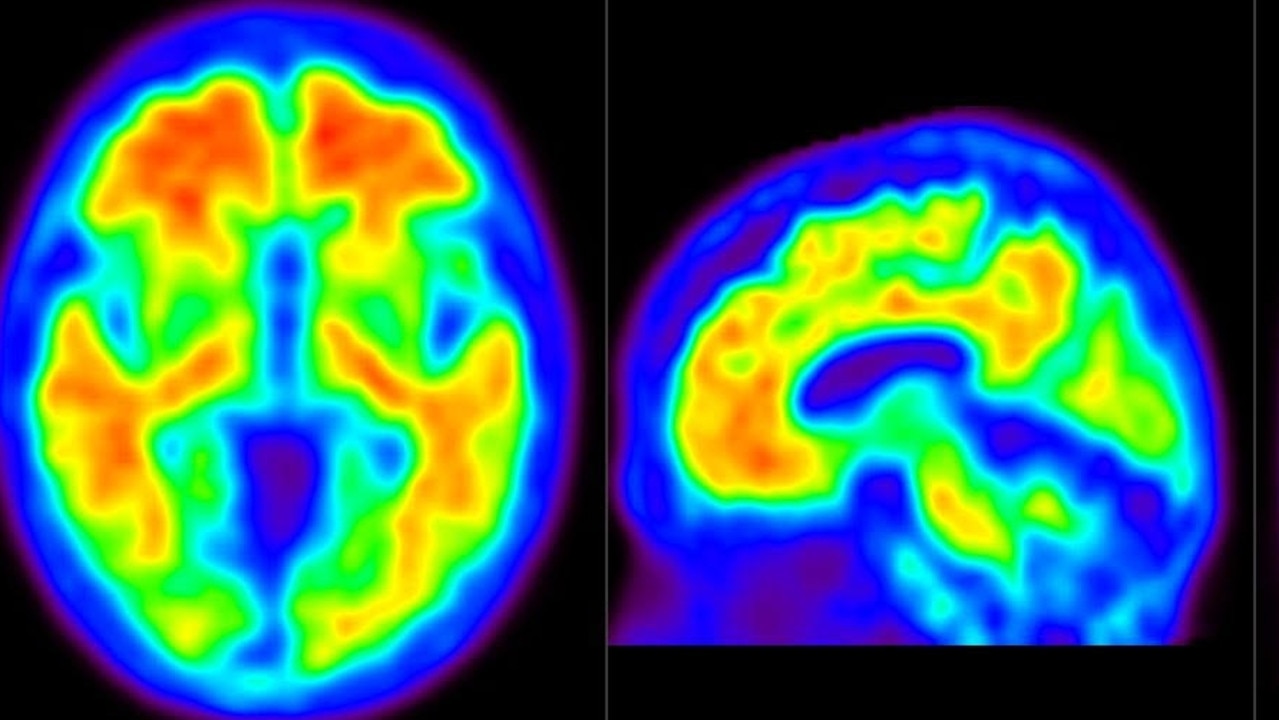SA lab’s brain cleaning project will attempt to reduce memory loss
Deep sleep doesn’t just rest your body – Australian scientists believe it’s also when the brain washes away toxins, with a new project looking at whether the brain’s self-clean can be boosted

READING LEVEL: ORANGE
How clean is your brain?
Two doctors are asking this very question as they look for a way to fight off memory loss and dementia.
South Australian Health and Medical Research Institute (SAHMRI) neuroscientist Dr Tim Sargeant has teamed with Dr Ed Robins from SAHMRI’s Molecular Imaging and Therapy Research Unit (MITRU) to develop a brain scan that shows how well a brain is cleaning itself.
Scientists believe our brains clean themselves out each night when we enter deep sleep. Cerebrospinal fluid (CSF) is thought to wash through the brain, cleaning out toxic waste.
Studies have shown a clear link between poor memory and the build-up of sticky plaques in the brain, called beta-amyloid.

Dr Sargeant said researchers believe brains that have a build up of this plaque over time may not be cleaning themselves properly, putting them at risk of dementia.
Dementia is a term used to describe diseases that cause the loss of memory, thinking, problem solving and language and greatly interfere with daily life.
The hope is that a clean brain would help with memory while fighting the onset of dementia.
The project has started in the laboratory but could be tested in humans in the future depending on how the studies go.

The proposed PET scan will use special molecules, labelled with radioactive isotopes, to track how well the brain can keep itself clean and healthy through the process of removing and recycling its waste.
By finding areas where the brain struggles to keep itself clean, the team hopes to treat a patient before serious damage occurs.
“We’re aiming to catch the signs of sluggish brain-cleaning in individuals around the age of 50 or 60, well before the onset of Alzheimer’s symptoms in most people,” Dr Sargeant said.
“This new scan will allow us to visualise a living brain and watch how effectively it’s recycling material in real time.”

Radioisotopes needed to fuel the scans are made by MITRU using the state’s only cyclotron, a radioactive particle accelerator housed underground at SAHMRI.
“Imaging is an exciting technology because it takes out a lot of the guess work, by allowing scientists to see with their own eyes if they’ve hit the target or not,” Dr Robins said.
“Without imaging, a researcher can get all the way up to the trial stage before realising they’re at a dead end.”
In 2020, Dr Sargeant’s team created the world’s first human blood test to measure autophagy – a measure of how well cells can clean themselves – and provide clues as to how healthily the body is ageing.
POLL
GLOSSARY
- cerebrospinal fluid: a clear body fluid found in the tissue surrounding the brain and spinal cord of all vertebrates
- beta-amyloid: a protein that clumps together as plaque and is commonly found in the brain of people with dementia
- onset: when something starts
- PET scan: positron emission tomography scan, a scan that uses radioactive material to diagnose diseases like brain disorders, tumours and heart disease
- molecules: the smallest unit of a substance having all the properties of that substance
- radioactive isotopes: an unstable form of a chemical that releases radiation as it breaks down and becomes more stable
- Alzheimer’s: Alzheimer’s disease is a form of dementia that destroys nerve cells in the brain and causes a person to lose their memory
- cyclotron: a particle accelerator, it accelerates charged particles by whirring them in a circle
- radioisotopes: radioactive isotopes (see above)
- autophagy: a normal bodily process involving the breaking down and recycling of cell parts
EXTRA READING
Tough call on hard knocks in AFL
First human receives brain chip
Major changes coming to kids’ sport
QUICK QUIZ
1. How does the brain clean itself?
2. What does plaque have to do with memory loss?
3. How does dementia interfere with daily life?
4. What is the aim of the brain scan being developed?
5. What is autophagy?
LISTEN TO THIS STORY
CLASSROOM ACTIVITIES
1. Using Tier 3 words in a summary
Tier 3 vocabulary refers to words that are technical and content specific. You wouldn’t commonly hear them in everyday conversation. There are many tier 3 words in this text. Read through and highlight them. Then challenge yourself to write an (approximately) 100 word summary of the article that contains as many tier 3 words as possible. Can you incorporate them all?
Time: allow 20 minutes to complete this activity
Curriculum Links: English; Science
2. Extension
Now imagine you need to retell the information from this article to a 5 year old in a way that they will understand. Write a new summary of the text that uses simple language to explain the doctors’ research.
Time: allow 20 minutes to complete this activity
Curriculum Links: English; Science
VCOP ACTIVITY
Conjunctions
Conjunctions are important in connecting ideas in a text and improving its flow. They help to join sentences, clauses or phrases to create a coherent and meaningful text.
Co-ordinating conjunctions are used to connect equal ideas or phrases – for example: and, but, or, so, yet, nor.
Subordinating conjunctions are connecting words or phrases that join a subordinating clause to the main idea. They provide additional information about the main idea – for example: because, although, while, when, if, since, until.
Complete at least two activities from the choices below:
- Read the news article carefully and highlight all the conjunctions used in the text.
- Write down the conjunctions you found and the words or phrases they connect.
- Identify the type of conjunction used (coordinating conjunctions or subordinating conjunctions).
- Explain the role of conjunctions in connecting ideas and improving the flow of a text.
- Write a short paragraph about something you found interesting in the article. Challenge yourself to re-use three conjunctions from the text. Can you up-level them to a higher level conjunction? Does it make the sentence better or harder to read? (Sometimes, the basic conjunction is the best choice).

